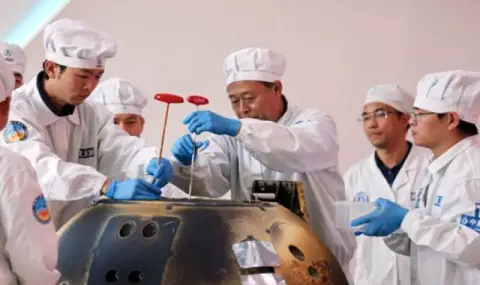Chinese scientists continue to reap the benefits of pioneering, reporting new discoveries made while studying the lunar soil samples on the far side of the satellite. The world's first samples from the side of the Moon hidden from Earth's observer were delivered to Earth by China's Chang'e-6 probe in June 2024. The first studies showed differences in the composition of the rocks on each other side of the satellite, but common features were also found, as seen in the new work of the Chinese.
An analysis by remote sensing of the surface of the Moon from its far side has led scientists to believe that volcanic activity there stopped quite a long time ago - about 4 billion years ago. Younger traces of volcanic activity dating back 2 billion years were found on the visible side of the satellite. Proof of this are soil samples delivered to Earth by Soviet, American and recently Chinese missions.
The topography and geology of the visible and far side of the Moon have significant differences, and scientists are trying to understand the reasons for this phenomenon. It is suggested that the differences may be related to the dynamics of volcanic activity. The volcanoes on the far side of the Moon disappeared several billion years earlier than on the visible side, which probably affected the composition of the rocks and geology of the surface.
